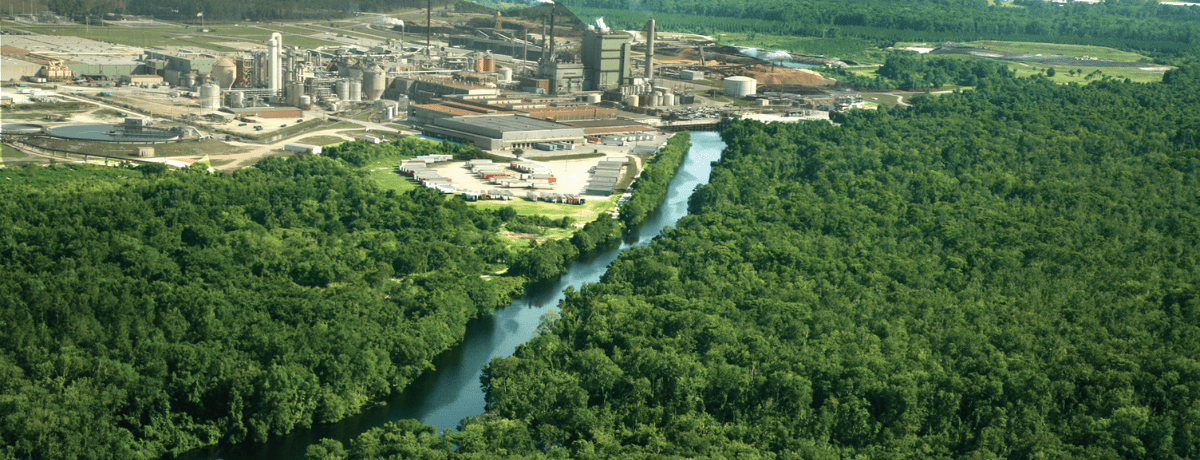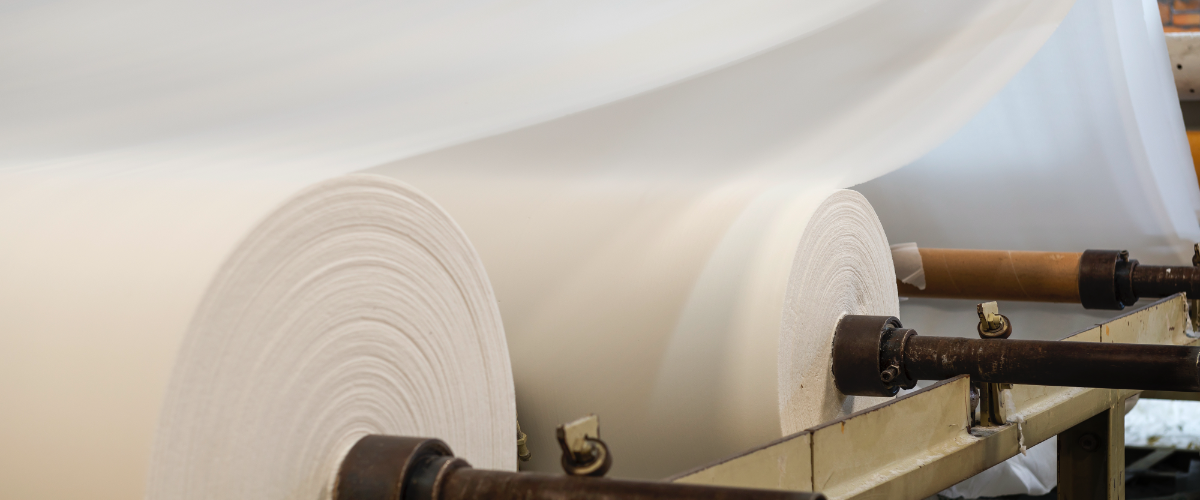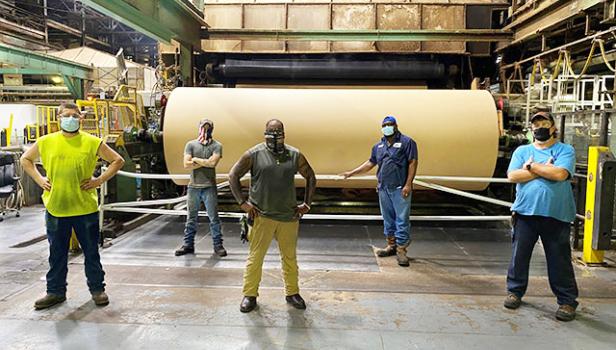Improving Our Workflow: Georgia-Pacific Mill Reduces Water Use by 40% in 10 Weeks
The processes for making paper have evolved over hundreds of years, but one ingredient has stayed the same: water. The precious natural resource is vital to creating every sheet of paper in existence, from napkins to notebooks to cardboard boxes.
At Koch Industries’ Georgia-Pacific mill in Palatka, Florida, the papermaking process starts with wood chips, which are first cooked at a high temperature to turn it into pulp, then washed and stored in large storage towers. Water is then added to the pulp in another step for ideal consistency as it makes its journey to the paper machine.
“By the time it gets to the paper machine, it is about 99% water,” says Bob Blankenship, a shift capability leader at the Palatka mill.
He’s seen how technology has automated many of the steps in making paper and changed the resources needed. Historically, traditional papermaking processes use lots of water, but the Palatka mill wanted to look for ways to reduce those amounts. Bob led a fresh water reduction project at the mill that was recognized last year with the U.S. Environmental Protection Agency’s ENERGY STAR® Top Project award.
“We have a certain amount of fresh water allocated to us for use in papermaking each year,” Bob says. “Increasing that amount requires use of additional natural resources that we want to avoid.”
The Palatka mill was preparing to install a new machine in 2019 that would increase production and efficiency, but would exceed the mill’s fresh water allocation. Having been in the business of making paper for 45 years, Bob was asked to spearhead the initiative to reduce Palatka’s fresh water usage in its kraft papermaking process. His strategy: reuse the water from the papermaking process instead of releasing it.
Bob selected two team members from the mill operations staff, Matt Branch and Bill Murray, to comprise the team. The two work on the wet and dry ends of the kraft paper machines, respectively, and each provided different viewpoints of the process to solve the challenge. Quickly, they decided to engage an unconventional strategy: They would start at the end where the water use was complete and work backwards.
The team looked at charts of water pressure and pipe sizes to determine how much water flows through the pipes around the department to pinpoint the areas they could capture to save water. They monitored drainage flows and looked deep into water piping to understand where the water was going and how best to capture for reuse.
Bob says operators on the floor were also very helpful in sharing insights about where water could be recycled.
“They would tell us, ‘We’re using some water over here that I don’t think we need to use.’ So we would go investigate that. We had the whole team on board as far as the crews,” Bob says. “We identified the areas where we saw opportunities to reduce water usage, and then we went back and traced the fresh water coming in and how much we were using at certain points.”
After Bob had a full overview of water usage and how to use it more efficiently, he and his team developed and built a solution to capture and treat the used water so it could be cycled back into the papermaking process — replacing the use of fresh water.
“For the highest usage points, we were able to recycle that water back into the system,” he says.
But it didn’t end there. The team also set up a digital solution to monitor how and where water is used in real time throughout the mill.
“We took the inputs from that and put it into our system using an easy-to-understand interface,” Bob says. “Everyone in the department can now monitor water usage in real time.”
Each operator has their own screen showing when a valve was open or closed, and whether water was flowing automatically or through a manual process. The digital solution alerts the operators of increases in usage so they can quickly investigate why and whether they need to turn off a valve. It can also signal that a pump is not functioning, causing water not to return.
In just 10 weeks, the Palatka team saw huge results. They reduced water usage by 40% — cutting it nearly in half. However, Bob says the work is only just beginning.
He credits a culture of environmental stewardship and teamwork at the mill for empowering the team to identify more opportunities to reuse water.
“This project showed the possibilities of what you could do with the water that you already have and not having to add fresh water to it. I believe we can reduce it even more,” he says. “All three of us are still really focused on this.”
Moving forward, Bob says he plans to share these learnings with other Georgia-Pacific mills to inspire more thinking around how to incorporate a closed water-reuse loop in other mills.
“There’s nothing more satisfying than to be able to pass knowledge on to someone else and see them actually benefit from the knowledge you have, because once you give them knowledge of how a process works or how something actually flows, then they add their spin and knowledge to it,” he says. “It just gets better from there."





